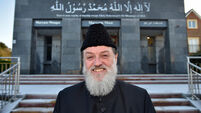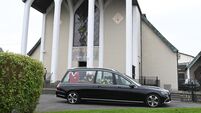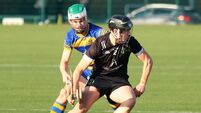Golden plover: the wings that shake the barley
At this time of year, if the weather is reasonably mild, there are often great flocks of golden plover wheeling and diving over the fields.
It’s a spectacular sight but also a little baffling. To begin with I can’t work out what the birds are doing. Sometimes they land on the field but the bird experts say that the golden plover is a ‘night time forager’, so presumably they’re not feeding. And they seem to spend more of the time doing lots of complicated flying that appears to be a complete waste of energy.
And the flocks are so big, many thousands of birds, that it’s hard to believe that the same experts are very worried about the golden plover because the species is in rapid decline. But the fact that they are vulnerable does mean that they’re being intensively studied and there is quite a lot of information about their status.
The golden plover is really a bird of the sub-arctic tundra regions and Ireland is at the extreme southern edge of their breeding range. But between 150,000 and 200,000 birds, a significant proportion of the world population, spend the winter here. Most of the Irish wintering population will breed in Iceland and the Faroe Islands.
OVER the past few years BirdWatch Ireland has been doing a lot of work, both nationally and internationally, to census and monitor golden plover populations. Some of the field work they’ve done has been quite heroic because of the difficult terrain that the birds nest in.
In Ireland they nest in blanket bog, usually but not invariably at high altitude, in the northwestern counties. They’re quite a small bird, a little larger than a blackbird. And, though their black and gold plumage looks showy in an illustration in a bird book, they are amazingly well camouflaged on their nesting grounds. So they’re not easy things to spot when they’re not in big flocks.
The way ornithologists like to get accurate bird censuses is to thoroughly search a number of one kilometre squares and then extrapolate the results for other areas of similar habitat. The trouble is that to build up a square a trained observer has to walk in a dead straight line for a thousand metres and then turn 90 degrees and do the same thing again. Anybody who has ever done any hill walking can imagine how difficult it is to walk for a thousand metres in a straight line over the average Irish mountain.
But in 2002 this is what the brave men and women from BirdWatch Ireland did in Co Donegal. And the following year they did it in Sligo, Leitrim and Cavan and in the 2004 breeding season they finished the job in Mayo and Galway.
They found a total of 130 breeding pairs in those six counties. They could have missed a few in the difficult terrain. And the survey was confined to the Republic — it’s probable that there are a couple of pairs in Co Fermanagh and possible that they nest in Co Antrim. To take into account all these possibilities the official total for golden plover breeding on the island of Ireland is estimated to be 150 pairs.
This is the first really detailed survey undertaken in this country but a comparison with previous work done over the past 30 or 40 years suggests they are in decline as a breeding species.
dick.warner@examiner.ie














